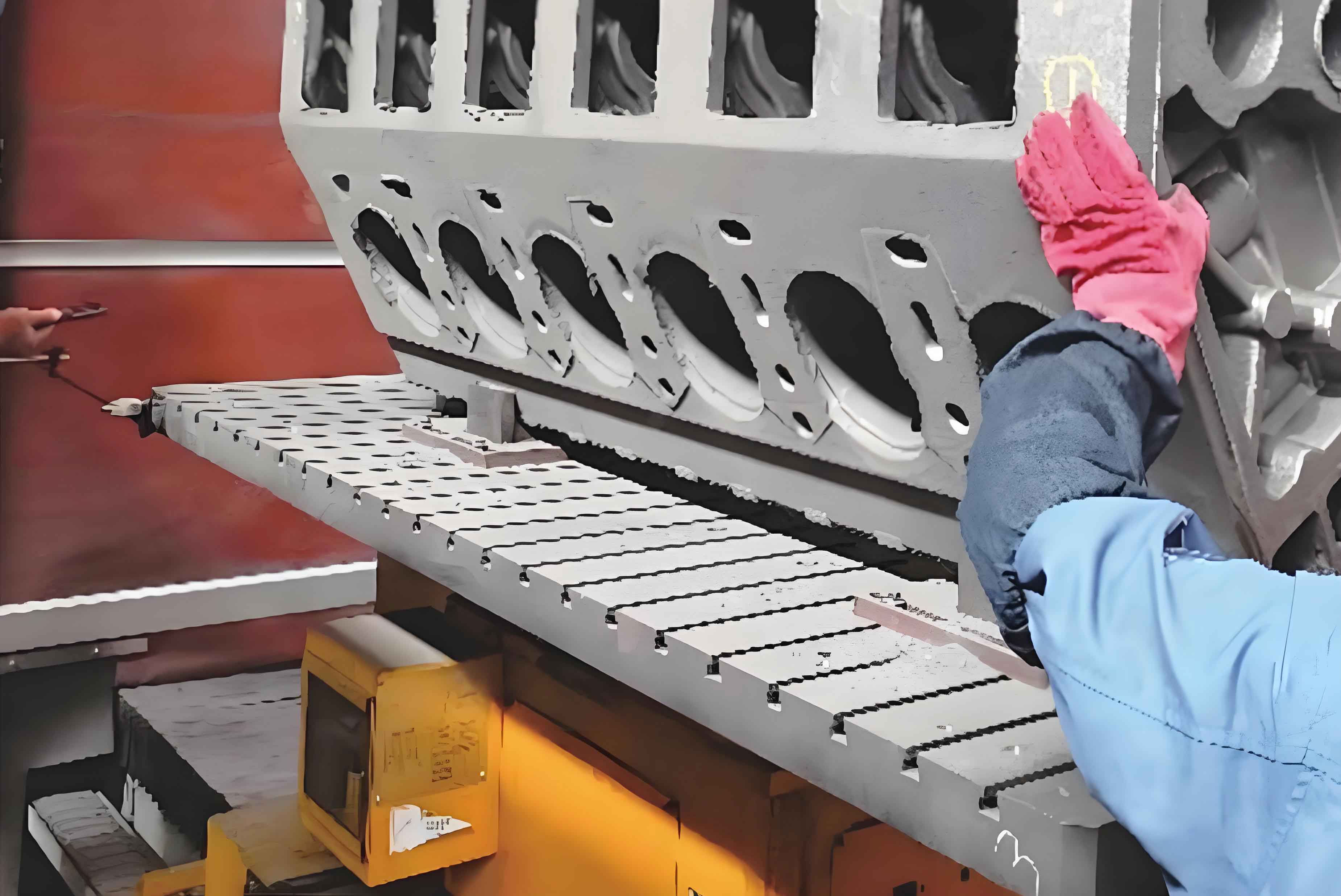In modern automotive manufacturing, engine cylinder blocks increasingly utilize aluminum alloys to meet lightweight design requirements. During machining operations, complex structural geometries create surface burrs that critically impact assembly precision and operational reliability. This paper presents a specialized deburring machine addressing multi-location burr formation in engine cylinder block internal cavities.
1. Burr Formation Mechanics
Burrs form through material plastic deformation during cutting processes, governed by:
$$ h = \frac{f \cdot \cot\theta}{2} $$
Where h represents burr height, f denotes feed rate, and θ is tool edge angle. For aluminum engine blocks (HB 80-110), typical burr dimensions range:
| Machining Process | Burr Height (mm) | Frequency (%) |
|---|---|---|
| Drilling | 0.05-0.15 | 92 |
| Milling | 0.08-0.20 | 85 |
| Tapping | 0.10-0.25 | 78 |

2. Machine Architecture
The deburring system comprises three primary subsystems:
$$ P = \frac{\tau \cdot \omega}{9550} $$
Where P is motor power (kW), τ torque (N·m), and ω angular velocity (rpm). Key parameters for engine cylinder block processing:
| Component | Specification | Performance |
|---|---|---|
| Rotary Brush | Ø150mm, 304SS | 2500-4000 rpm |
| Linear Actuator | 1000mm stroke | 0.5-2.0 m/min |
| Vacuum System | 5kW blower | 95% debris removal |
3. Process Optimization
Optimal deburring parameters for engine cylinder block aluminum alloy (Si 7-12%):
$$ MRR = K \cdot v^{1.2} \cdot F_n^{0.8} $$
Where MRR is material removal rate (mm³/s), v cutting speed (m/s), and Fn normal force (N). Field test results:
| Parameter | Baseline | Optimized | Improvement |
|---|---|---|---|
| Cycle Time | 240s | 165s | 31%↓ |
| Burr Height | 0.12mm | 0.04mm | 67%↓ |
| Tool Wear | 0.15mm/hr | 0.08mm/hr | 47%↓ |
4. Quality Validation
Post-processing inspection for engine cylinder block components revealed:
$$ R_a = \frac{1}{n}\sum_{i=1}^{n}|y_i| $$
Surface roughness Ra improved from 3.2μm to 1.6μm, with 99.7% of bore diameters maintaining ±0.015mm tolerance. Residual stress measurements showed:
| Location | Pre-Treatment (MPa) | Post-Treatment (MPa) |
|---|---|---|
| Main Bore | -85 | -42 |
| Coolant Passages | -120 | -68 |
| Mounting Face | -95 | -53 |
5. Industrial Implementation
The engine cylinder block deburring system demonstrates:
$$ ROI = \frac{C_{\text{manual}} – C_{\text{machine}}}{I_{\text{equip}}} \cdot 100\% $$
With manual deburring costs Cmanual = $18/unit vs. automated Cmachine = $6.5/unit, achieving 63% cost reduction. Production line integration achieved 98.6% uptime with mean time between failures (MTBF) of 1,450 hours.
6. Conclusion
This engine cylinder block deburring solution effectively addresses aluminum alloy machining challenges through:
- Precision-controlled rotary brushing
- Adaptive feed-rate optimization
- Integrated debris management
Field implementations demonstrate 0.02mm maximum residual burr height compliance with automotive OEM specifications, validating the system’s effectiveness for high-volume engine cylinder block production.
